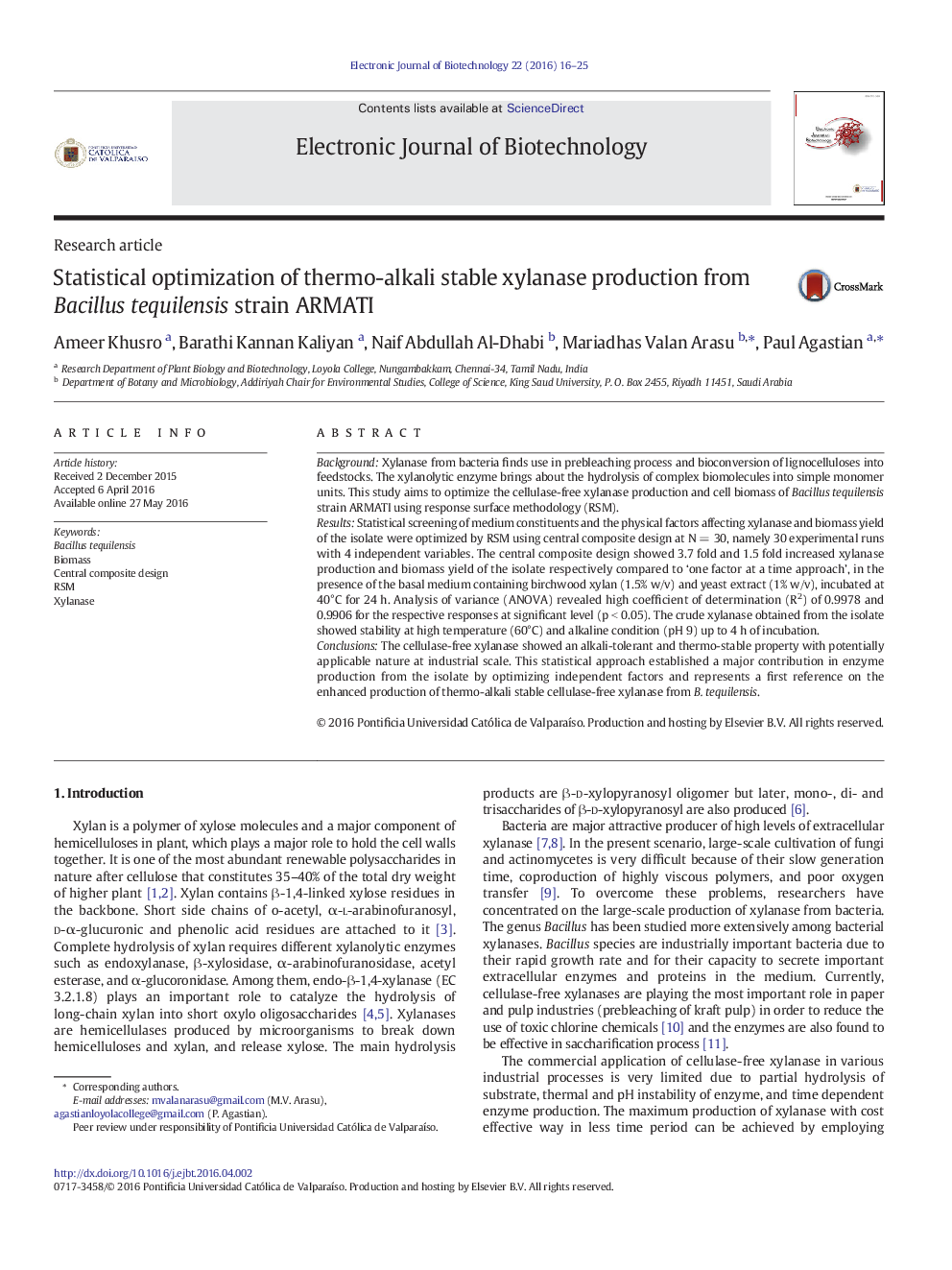| Article ID | Journal | Published Year | Pages | File Type |
|---|---|---|---|---|
| 200703 | Electronic Journal of Biotechnology | 2016 | 10 Pages |
BackgroundXylanase from bacteria finds use in prebleaching process and bioconversion of lignocelluloses into feedstocks. The xylanolytic enzyme brings about the hydrolysis of complex biomolecules into simple monomer units. This study aims to optimize the cellulase-free xylanase production and cell biomass of Bacillus tequilensis strain ARMATI using response surface methodology (RSM).ResultsStatistical screening of medium constituents and the physical factors affecting xylanase and biomass yield of the isolate were optimized by RSM using central composite design at N = 30, namely 30 experimental runs with 4 independent variables. The central composite design showed 3.7 fold and 1.5 fold increased xylanase production and biomass yield of the isolate respectively compared to ‘one factor at a time approach’, in the presence of the basal medium containing birchwood xylan (1.5% w/v) and yeast extract (1% w/v), incubated at 40°C for 24 h. Analysis of variance (ANOVA) revealed high coefficient of determination (R2) of 0.9978 and 0.9906 for the respective responses at significant level (p < 0.05). The crude xylanase obtained from the isolate showed stability at high temperature (60°C) and alkaline condition (pH 9) up to 4 h of incubation.ConclusionsThe cellulase-free xylanase showed an alkali-tolerant and thermo-stable property with potentially applicable nature at industrial scale. This statistical approach established a major contribution in enzyme production from the isolate by optimizing independent factors and represents a first reference on the enhanced production of thermo-alkali stable cellulase-free xylanase from B. tequilensis.
